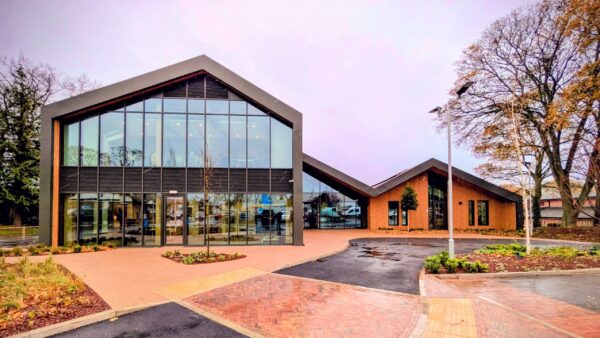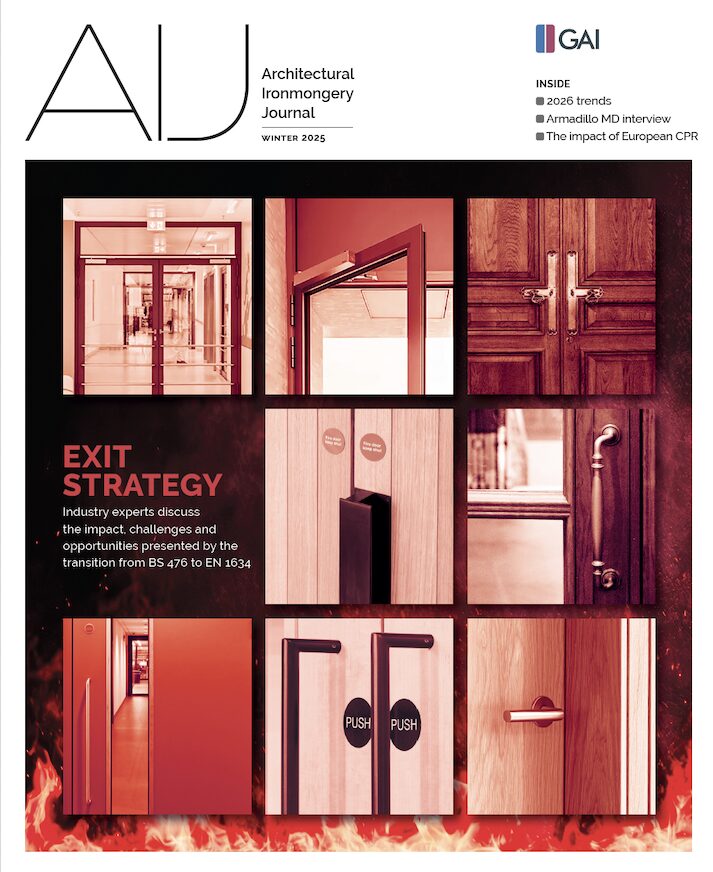What can the industry do to appeal to new talent? Nicky Roger explores the issues

The architectural ironmongery sector is a vital but often overlooked cornerstone of the built environment. From door closers in hospitals to access control in commercial buildings, architectural ironmongery ensures the safety, security, and functionality of our spaces. Yet despite its importance, the sector faces an ongoing challenge: attracting and retaining the next generation of talent.
Like many technical and specialist industries, architectural ironmongery is experiencing the effects of an ageing workforce, a lack of visibility among younger jobseekers, and increasing competition for skilled labour. At the same time, the complexity of construction projects continues to grow. Regulations evolve, sustainability demands intensify, and technology – especially in the form of smart and integrated systems – continues to reshape the scope of what ironmongery professionals must know and do. The result is a growing skills gap that, if unaddressed, could have long-term implications for the quality and efficiency of building projects across the UK.
Visibility and image
The issue is not just about numbers; it’s about perception. To many outside the sector, architectural ironmongery remains a niche or even invisible discipline. Careers advisors rarely mention it, and young people often enter the field by accident rather than design. There’s a clear need to tell a more compelling story – one that highlights the intellectual challenge, the creative and problem-solving aspects of specification, the satisfaction of contributing to iconic buildings, and the potential for a meaningful and varied career.
There’s also a cultural shift underway. The rising workforce – particularly Millennials and Gen Z – are not just looking for a job; they want purpose, growth opportunities, and inclusive workplaces. That means the sector must not only raise awareness but also evolve its approach to training, career development, and workplace culture if it’s to remain competitive.
Lindsay Winters, human resources business partner at Allegion UK, says the age gap is the basis of the issue. “There is a generational issue concerning talent in our sector. Those grouped into the ‘Generation Z’ bracket have very different attitudes and expectations towards work. Where previously employees would be asking what they can do for a business, this has now shifted to what a business can do for employees.
“The younger generation is naturally drawn towards digitisation and are now less inclined to approach a career in manual roles as found in the ironmongery sector. To attract and retain new employees, we must look at the whole package being offered to young people, including environmental, social and governance considerations and investment.”

Kaz Spiewakowski, managing director of GEZE UK says the answer lies in promoting the industry to young people early on. “Visibility and image are big challenges. Architectural ironmongery is not always seen as modern or progressive, yet the industry is evolving through smart tech and sustainable design. Many people simply aren’t aware of the industry or the range of careers it offers. We need to tell a more compelling story – through school outreach, open days, and social media – about the impact and opportunities in this sector. We need to highlight formal education routes and career progression, especially through GAI-accredited qualifications, to help young people see it as a serious, long-term career. Mentoring and modern learning tools also play a big role in keeping the industry relevant and accessible.”
Codelocks managing director Jo Milne-Rowe agrees. “Awareness is a significant challenge. Many people just don’t know what architectural ironmongery encompasses, or what roles exist within the sector. We need to celebrate individual achievements within our sector, highlighting the human and innovative side of what we do. Seeing where it can take them, from the shop floor to the boardroom and travelling the world, people will start to envision their career path in architectural ironmongery, helping us build a stronger talent pipeline.
What we do is about smart, design-driven and innovative solutions with technological integration at their heart. There are diverse roles available, and the skills gained are highly transferable and create opportunities across industries"
“We could also do with clarifying the term ‘architectural ironmongery’. Most people outside our sector don’t know what it means or understand the breadth and relevance of the field. I’m not suggesting a rename or rebrand. However, the sector is about more than just hardware, and people aren’t aware of that. What we do is about smart, design-driven and innovative solutions with technological integration at their heart. There are diverse roles available, and the skills gained are highly transferable and create opportunities across industries. Ours is a foundational, global, and creative profession.
“Although the GAI offers comprehensive training programmes, lots of the essential skills required to succeed are industry-specific and not taught elsewhere. That can create a steeper learning curve in some parts of our field, which may deter new people. There’s also a perception that the field isn’t digitally aligned, when in reality it is, which limits its appeal to younger generations.”
Apprenticeships
Milne-Rowe says workplace development and training are essential to this mission, as well as offering apprenticeship programmes that expose them to all areas of the business, especially digital. “Though it may be cliché to say that young people like digital things, the fact of the matter is, the pace of technological change means digital integrations are a part of a wide range of today’s products. Our industry could also highlight these aspects more strongly. Lastly, companies should be open to hiring people without prior experience, providing supportive paths for early career learning and advancement.”
These are issues Codelocks has had to address. “To attract new talent, we’ve had to be flexible and aware of generational expectations around in-office collaboration and remote working. We’ve also emphasised career progression that appeal to people seeking new positions.
“Attracting and retaining young talent is an ongoing priority for us, as we recognise the value fresh perspectives bring to the business. We’ve had positive experiences with individuals entering our industry from a variety of backgrounds, and we’re beginning to see the benefits of bringing apprentices into the team.”

Instinct Hardware has also opted for the apprentice route to offer opportunities to the next generation. Haq Meharban, director of sales and marketing, says this helps to plug knowledge gaps too. “Our industry is predominately made up of an aging workforce, where workers are nearing retirement. There is a lack of younger skilled workers to replace them. This has had a direct impact meaning we’re seeing a loss of institutional knowledge and a gap in essential skills, such as toolmaking, machining and finishing. The apprenticeship route is the perfect solution for us. However, there has been a decline in vocational education and hands-on apprenticeships. This once again affects our sector. New entrants often lack the technical skills specific to this niche sector, such as forging, casting or precision metalworking. When the opportunity arose to take apprentices on, we had those specific things in mind – teaching the young entrants skills that they would not normally get taught in an educational setting.”
However, Meharban says the industry has an image problem to face. “The acquisition of talent is proving challenging as ironmongery in particular is often seen as outdated or unappealing to young people. This has led to a low uptake of roles despite strong demand and often stable employment prospects. We have tried to combat this by tailoring our training around design and engineering, giving it more of an appeal.”
Our sector is undergoing a digital transformation and we must be agile to stay competitive. This can be more difficult when upskilling mature workers who are used to more traditional engineering. We don’t want to lose these skills, so we work hard to blend practical knowledge with the newest technology. A key way to do this is to bring in apprentices with the necessary skills to adapt to these changes"
And in an increasingly digital world this appeal is even more crucial. “Our sector is undergoing a digital transformation and we must be agile to stay competitive,” says Meharban. “This can be more difficult when upskilling mature workers who are used to more traditional engineering. We don’t want to lose these skills, so we work hard to blend practical knowledge with the newest technology. A key way to do this is to bring in apprentices with the necessary skills to adapt to these changes.”
Instinct has hired apprentices in two key sectors of the business (machining and design) to aid the challenges the business is facing in digitalisation. “We are seeing them go from strength to strength and who knows, they might even train the next generation coming through one day. And that’s the way it should be!” says Meharban.
ASSA ABLOY Door Group is also benefiting from apprenticeships. “We firmly believe that attracting and nurturing the next generation of talent is essential for the long-term health and innovation of door solutions and wider construction sectors,” says Brian Sofley, managing director.
“We recognise the importance of aligning our talent development efforts with the skills being taught in local education institutions. We’re working closely with our local college to identify students whose courses and interests align with the technical roles within our business.

“Our past apprentices have made significant contributions to the business, and we’re proud of their progression. One former mechatronics apprentice, for example, now leads our quality function, while another has developed into a project engineer after gaining hands-on experience with our CNC equipment. Several other apprentices, particularly those in engineering and vocational subjects, have remained with us and continue to develop their careers in both factory and project-based roles,” Sofley adds.
In addition to apprenticeships, ASSA ABLOY Door Group is supporting young people through other initiatives. It has previously hosted internships in R&D, engineering and marketing, and has recently welcomed a new University Associate as part of a Knowledge Transfer Partnership (KTP) in its R&D team.
It is also an Impact Sponsor of Young Enterprise Northern Ireland (YENI), supporting educational programmes that introduce students to business and engineering concepts at an early age.
“These initiatives are vital for opening young minds to the diverse career paths available within manufacturing and engineering, including ironmongery” says Sofley. “Attracting young talent isn’t just about filling roles – it’s about creating meaningful opportunities, showcasing career development, and engaging with education providers to ensure mutual understanding of the skills industry needs.”








